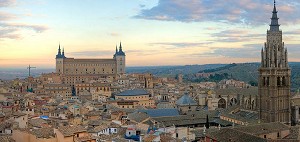
Other articles in this series are Sheffield by Adam Long, Fort William by Dave MacLeod and North Wales by Jack Geldard.

Like the Pais Basque, Catalunya's relationship with the greater Spain has often been troubled, though fortunately, in modern times, never to the same extent as in the lands of their northern cousins. There's actually a great affinity between the two regions, and nowhere more so than in the football stadium: at a recent cup final — La Copa del Rei (King's Cup) — between Barcelona and Athletic Bilbao, Basque and Catalan fans were united in remaining absolutely silent during the Spanish national anthem, many even turning their backs on a very embarrassed looking King and Queen for the duration of the music. Judging by the front pages of the Madrid newspapers the following morning, some were not amused!
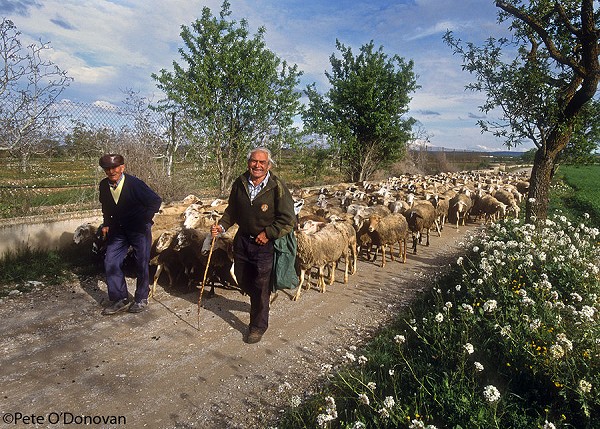
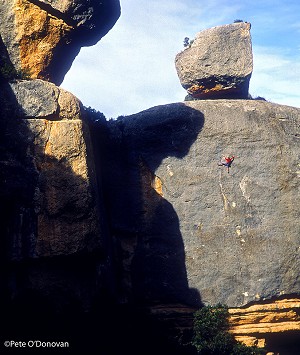
The whole coastal strip is highly developed, with tourists, particularly those from colder northern European countries, flocking in their millions to the sandy beaches of the Mediterranean, basting themselves senseless in a desperate attempt to return home looking like bronzed Gods, but usually only managing passable impressions of oversized, overcooked prawns. Few of these sun seekers could possibly imagine that, were they to jump in a car and head northwest for a couple of hours, they would encounter some of the wildest, most dramatic landscapes in the whole of Europe: 3,000 metre snowy peaks, towering rock walls, deep limestone gorges, and turbulent snow-fed rivers.
So how would a prospective re-locator go about setting up home here? Realizing that my own situation i.e. 'marrying' into the country was rather unusual, I sought the help of a young British couple, Tom Bolger and Lynne Malcolm, who initially came out here on an extended climbing trip, but liked the place so much they decided to stay. Although not exclusive to Tom and Lynne, some of the following advice is based on their experiences.
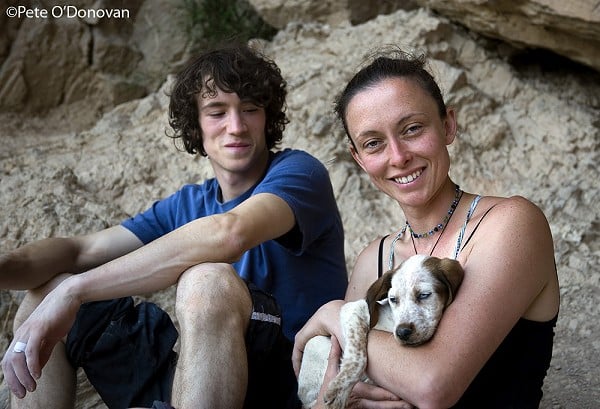
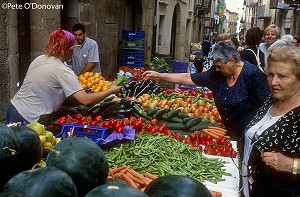
The Catalan language, or to give it its correct name, Català, is not just a dialect of Castillian (Spanish) it's completely different. Forbidden in public during the reign of Franco (1939-1975), and punishable by imprisonment if heard in the streets, Catalan is now the first language in every school. However, Spanish is also taught, understood by all, and still widely used, even if begrudgingly by some. Visually Catalan presents no great problems of pronunciation for English speakers: the double 'l' is very commonly used and should be treated the same way as in 'million', though their appearance at the beginning and ending of words can be a tongue twister. Try saying the name of one of the region's favourite poets, Ramon Llull; if you can manage that you can manage anything. Likewise, names ending in the letter 'y', such as Montgrony and Montseny, also seem to give foreigners problems. The 'y' should be pronounced the same as in 'you' rather than 'any'. However, realistically speaking, if you want to learn just one language the sensible choice is Castillian. That way you'll get by here and also be fine in the rest of Spain.


The working day in Catalunya is still split into two halves, with a sizeable lunch break in between, meaning many people turn up at their place of employment at 9.00 in the morning and don't leave again 'till 8.30 in the evening, though in the smaller towns lots of folk go home for lunch. This system, though obviously very sensible back in the days when most people used to work on the land, and thus needed to avoid the hotter midday hours, seems utterly crazy to me in the age of air conditioning and Venetian blinds. But, as they say in Scunthorpe, "when in Rome........" Consequently lunch tends to be the main meal, and dinner (we call it 'tea' in Sheffield) eaten rather later than in the UK. In fact, the whole of life is lived on a later footing here: during the summer months very young children are often seen joining their parents for midnight ice cream treats at street cafes, and at a recent 'open' bouldering competition in Lleida, which featured such revered names as Chris Sharma, Dani Andrada and Ramon Julian (Ramonet) the men's final didn't wrap up until 4.30 in the morning! Catalans like to enjoy themselves and, at least during the summer months, spend a lot of time doing so outdoors. Wherever you go, from the smallest village to the largest town, you can't help but be impressed by the number of Festes, street theatre events, and celebrations of one sort or another going on.
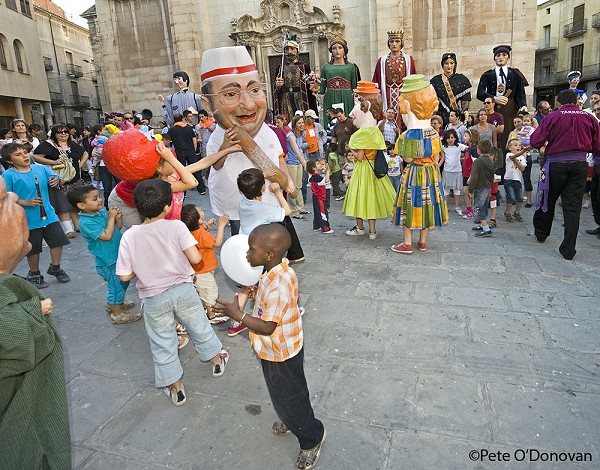
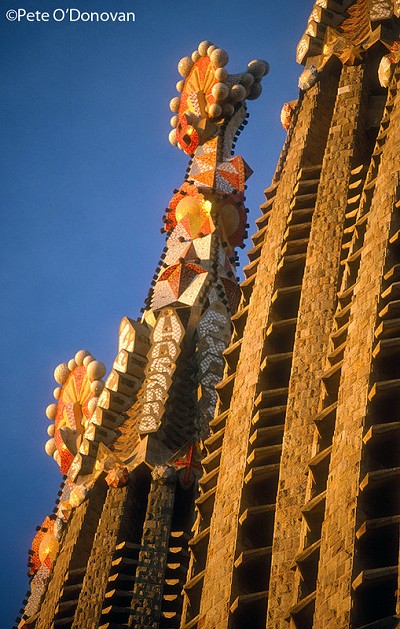
Any citizen of a European Union member state is legally permitted to work in Spain without the need for special permits of any kind. However, your options for employment largely boils down to one thing: can you speak the language or can't you? I'm talking Castillian here rather than Catalan, although in certain parts of the region a few words of the latter will open more doors than complete mastery of the former. If you can get by in Castillian then your job prospects are obviously far better, but if English is your one and only tongue, then the best chance of obtaining work is to teach it. By a stroke of good fortune we are going through a period in Catalunya where it seems that virtually everyone wants to learn English, and the government has put large recourses into what it calls its 'third language project'. The aim is for every child to leave secondary school with a basic level of English, and to finish baccalaureate (sixth form) with a sound working knowledge of the language. Kids begin English in school from as early as 5 years old, and the new directive foresees employing thousands of native (English) speakers as classroom assistants over the next few years. But many children also attend extra evening classes in private language schools several times a week, and it is these establishments which offer the most likely source of employment for English speaking foreigners. While many require TEFL qualifications (teaching English as a foreign language), some private schools are willing to accept people without, putting them through their own training programmes before unleashing them on the public.
That's the good news; here's the bad. Working hours may be flexible, but will almost certainly be geared to the latter part of the day meaning if you want to climb on a regular basis you'll need to get up early. Tom and Lynne do three morning shifts (including Saturdays) and five late afternoon/evenings, so their cragging time is actually quite limited.
Furthermore, the pay in these establishments is not particularly great — around a €1,000 a month for a typical 30-35 hour week seems about the going rate, and you'll be stopped tax and social security out of that. In fact, wages here are generally worse than in the UK, whichever field of work you're in, and with the cost of living only slightly lower, if at all (whatever anybody tells you to the contrary), most will find themselves on a pretty tight budget.
The usual way to find work in private language schools is via the internet, which means you could possibly land a job even before leaving Britain. However, another English friend of mine, who now lives and works in Girona, became seriously discouraged with this approach, after applying for dozens of potential jobs without reply. He found the direct route of phone calls and personal visits to be far more successful.
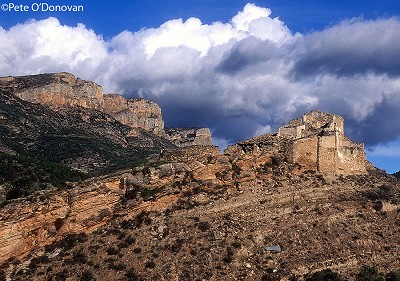
Given the aforementioned budget constraints, even the cheapest forms of rental accommodation will likely eat up a considerable portion of income, particularly in the larger cities, which ironically are the places most likely to offer the best employment opportunities. Rent for a basic two bedroom flat in somewhere like Lleida, the western Catalan city so beloved of climbers, will set you back around €500-600 a month. Add at least 30% for Barcelona where, unless you find someone to share with, the figures just don't add up. Tom and Lynne, after initially renting in Lleida, later moved out to one of the surrounding rural villages, and now pay something like 40% less for a considerably larger and nicer property. They have a longer commute into work, but a shorter one to the crags, plus an absolutely wonderful view from the kitchen window.
For those looking at a more permanent move, and perhaps with a bit of capital already in the bank, buying a property is another option worth considering. The pros and cons of this are discussed endlessly on hundreds of ex-pat websites, so it's not my intention to dwell too deeply on the subject here, but suffice to say that, provided one has a thorough understanding of all the legal complexities, in certain areas of Catalunya it is still possible (even at €1.14 to the £) to find some reasonably priced houses. Getting a mortgage here, especially in the current economic climate, may prove slightly tricky. Rather than proof of earnings, what the banks really want to see is a written contract of work, promising employment for a reasonable period of time. You'll typically need to put down at least a 20% deposit, and although there's no stamp duty here, VAT at 7% is payable on all property transactions. Add roughly another 5% to cover legal fees and setup costs and the result is that, for a €100,000 house, you'll need to have around €32,000 in the bank. Apparently, the vendor sometimes contributes to initial costs.
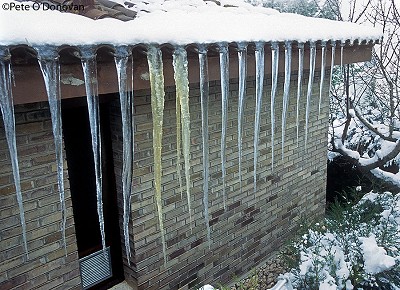
Better than the UK! Summers are generally hot and dry, though not so extreme as further south in Spain. Even so, temperatures from late June to mid September generally hover between 80 and 95°F, meaning as a climber you'll either need to either head for the hills or head for the shade (or maybe the swimming pool). And don't, whatever you do, think about bringing a car over that doesn't have air-con — you'll suffer, believe me. Spring and autumn are usually fine, but sometimes unpredictable, with rainfall figures seeming to vary dramatically from year to year. However, with many of the crags here drying out much faster than UK limestone, there's nearly always something to climb. Winter is my favourite season in Catalunya and, although the 2008/2009 is not one to remember fondly, often provides perfect climbing conditions. Anti-cyclonic weather systems frequently settle over the country from December to February, bringing very cold nights, but beautiful sunny days. Pick your spot carefully and you could well be climbing bare-chested. It's worth noting that in the lower-lying parts of Catalunya, particularly the huge fertile plain, which surrounds the western city of Lleida, these stable high-pressure systems often cause temperature inversions, resulting in dense, freezing fogs, which can last anything up to a month at a time. My own neck of the woods is susceptible to this and it never ceases to amaze me how, driving up to higher ground for a day's climbing, one minute I can be peering through the windscreen into the gloom, headlights on, and scanning the road for patches of ice, the next I'm scrabbling around for my sunglasses as we break through into clear, blue skies. Returning in the evening the sequence of events is exactly reversed — the demarcation line often moving less than a few metres!
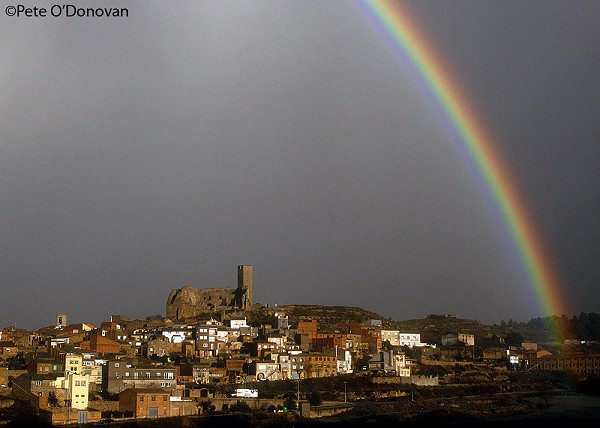
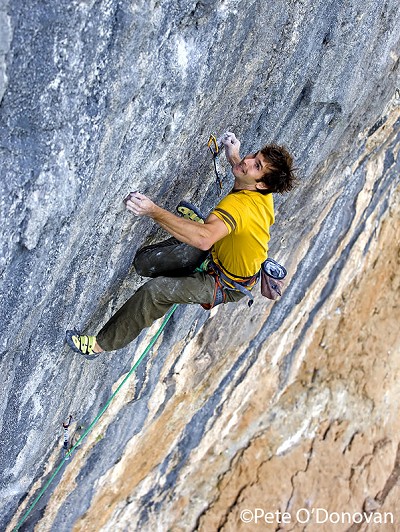
Where should I start? There's world -class sport climbing in virtually every corner of Catalunya. In the east, Montserrat, Montgrony and Sadernes. To the south, the Costa Daurada, with its internationally famous locations such as Siurana, La Mussara, Montsant and Margalef, to name just a few. The west of the region, north of the city of Lleida, is home to some of the latest 'must visit' crags heading the hit lists of any ambitious rock star — Oliana, Tres Ponts and Paret de les Bruixes at Terradets. Lleida is also well placed for Rodellar, only an hour and a half drive away into neighbouring Aragón. The foothills and main peaks of the Pyrenees (I should really use the Catalan Pirineus) add a further ingredient to the mix, offering adventurous multi pitch climbs, both bolted and trad, as well as opportunities for winter mountaineering and ski touring.
So, are you interested? Catalunya might not be everyone's cup of tea. Compared to, say, southern France, the villages aren't quite so pretty, the landscape harsher and the drivers definitely crazier! But with the right attitude and an open mind I think for that, for people passionate about climbing, there can be few better places in Europe to live. Tom and Lynne see Catalunya as a place where their quality of life is far beyond anything possible back home and have great plans for the future. They eventually hope to set up accommodation and guiding facilities for visiting climbers, and are currently searching for appropriate premises from which to base their operation.
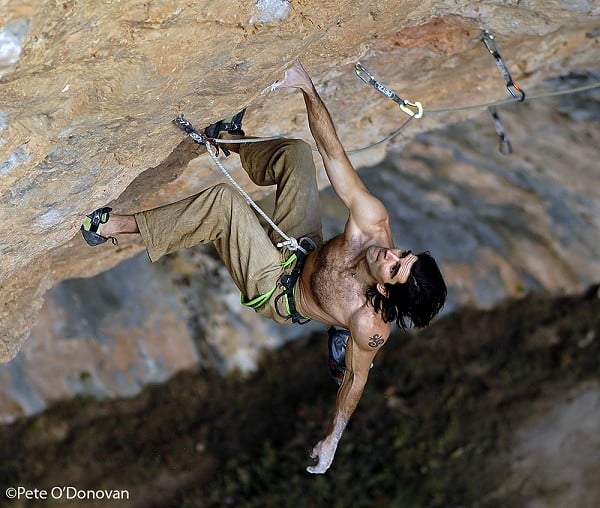
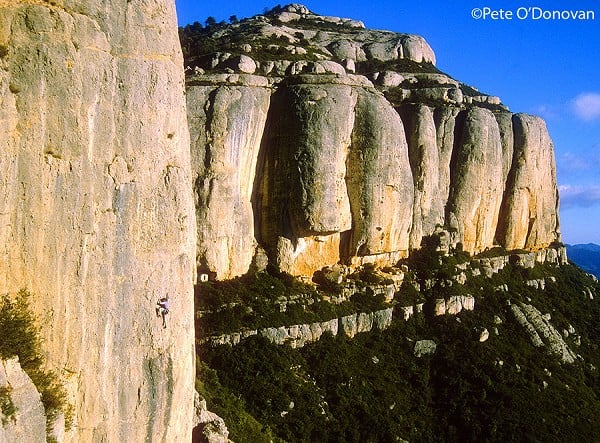
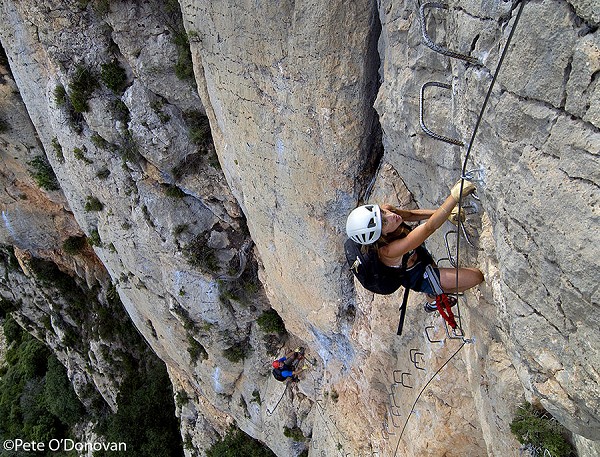
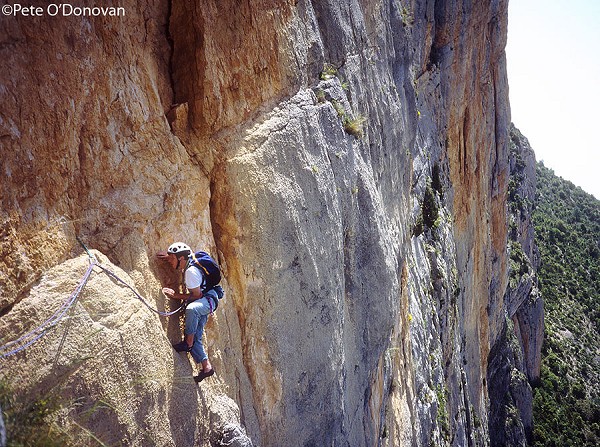
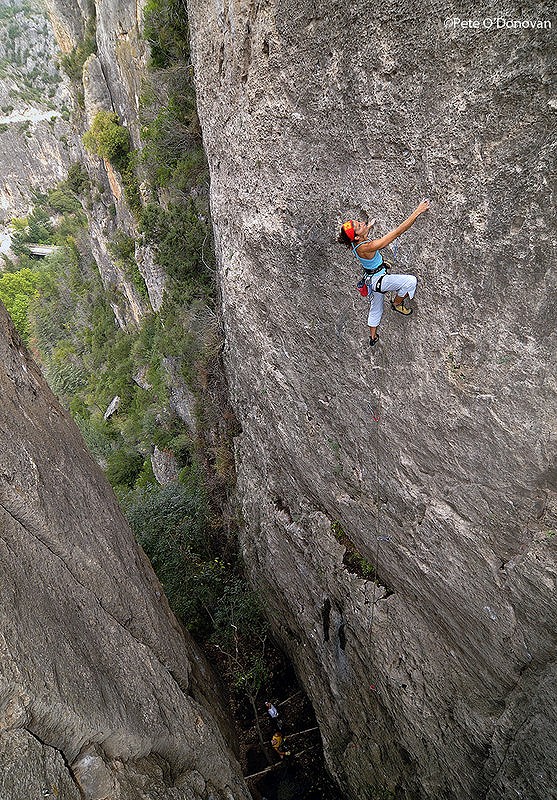
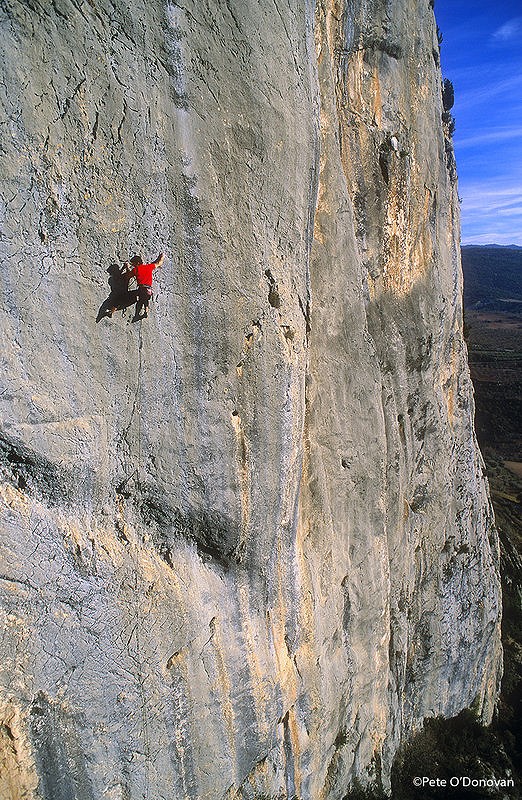
Footnote
Finally, sorry Manchester United fans, but it would be remiss of me to finish any article about Catalunya without adding a footnote concerning the favourite topic of its citizens: Barcelona football club. The club is a mutual society, owned by its fans; they play beautiful, flowing football: and they wear the Unicef logo on their shirts. What's not to like? The clubs fans, known affectionately as 'Culés' are spread across every age range and important games, particularly those against their great historic rivals Real Madrid, are always occasions for collective joy or sorrow. There's a definite political undertone to all this: back in Franco's day, Real Madrid were always considered to be the 'government's team', by suspicious Catalans, favoured by politicians and referees alike. When, in 2001, serving Spanish president José Maria Aznar reportedly stated that "all is well in Spain, the economy is booming and Real Madrid are top of the league" it appeared that little had changed. However the current leader, Zapatero, is a confirmed Culé himself, so maybe they have. The last time the two sides met, back in mid-April, I happened to be staying at a campsite just outside the town of Organyà, near the current 'super-crag' Oliana. Although playing away, and with Real looking at narrowing the gap at the top of the league to just one point should they win, the game finished 6-2 in Barça's favour. Even though Organyà is just a small, rural centre in the Pyrenean foothills, almost 200 kms from the capital, each and every Barça goal was marked by fireworks, car-horns and general all-round hysteria, from the youngest child to the oldest granny. This level of commitment to what is essentially just a game might seem a little unhealthy to the casual observer, but actually witnessing it one realizes it's relatively harmless. Celebrations after wins are always good-natured and rarely alcohol-fuelled. Losses are accepted stoically — Catalans are born pessimists and consequently gracious in defeat. That night at Organyà, sounds from the ensuing street party (it was also the Festa Major) continued to drift over the campsite well into the small hours. However, that was nothing compared to what transpired a few weeks later. As I sit here in front of the computer, the day after the Champions League win against Man United, I'll leave it to your imaginations to picture the scenes across Catalunya last night. Visca Barça! Visca Catalunya!
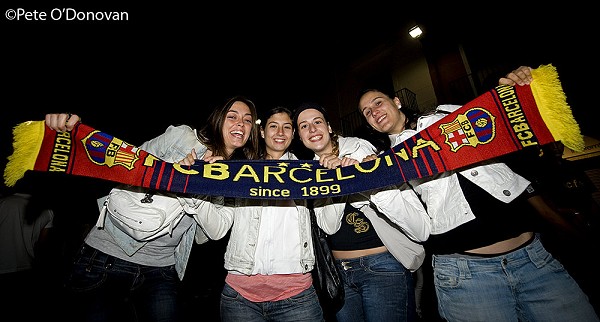
©Pete O'Donovan 2009
Catalunya
|
Guidebooks? Golden, sun-kissed limestone, here we come: Guidebooks:
|
Job Opportunities? Websites with jobs in Spain: Climbing Walls: |
- New guidebook to Catalunya (Northeast Spain) 14 Sep, 2010
- Dupuytren's Contracture - A Climber's Condition? 5 Jul, 2010
- Catalunya Report - December 8th 9 Dec, 2008
- Climbing in Catalunya - an uncertain future. 9 Sep, 2008
- Catalunya ? Winter 07/08 31 Mar, 2008

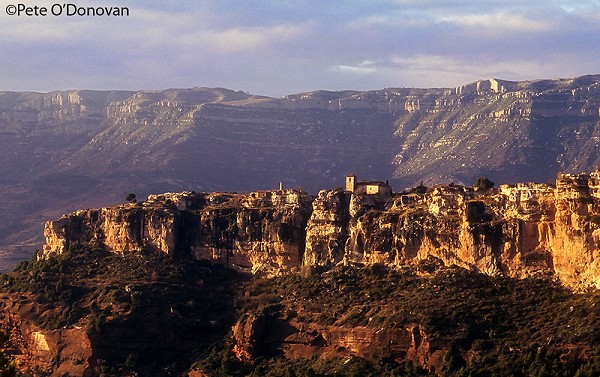

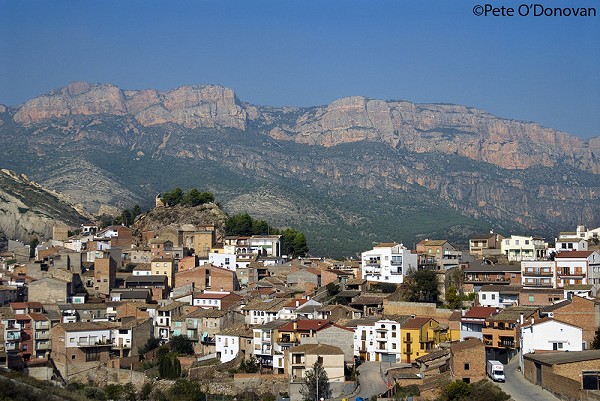

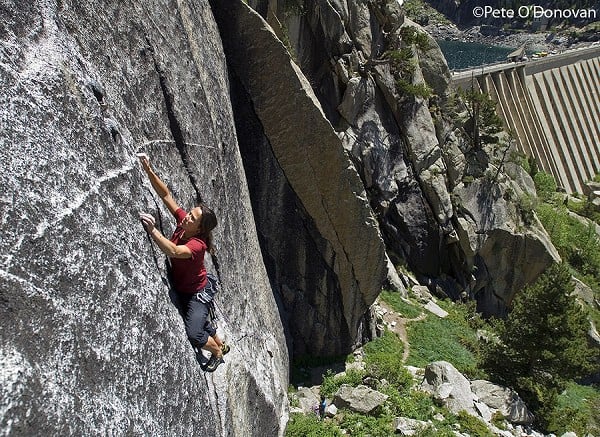


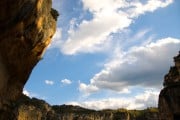
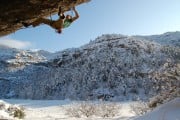

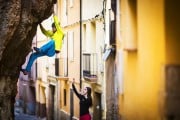
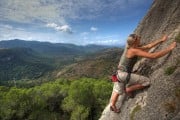
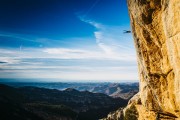
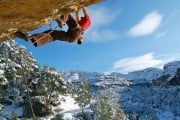
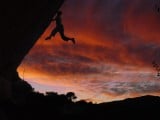


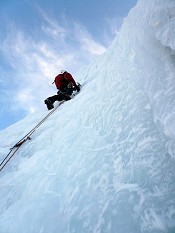
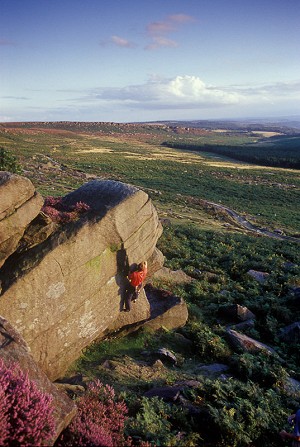
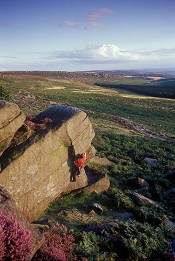






Comments